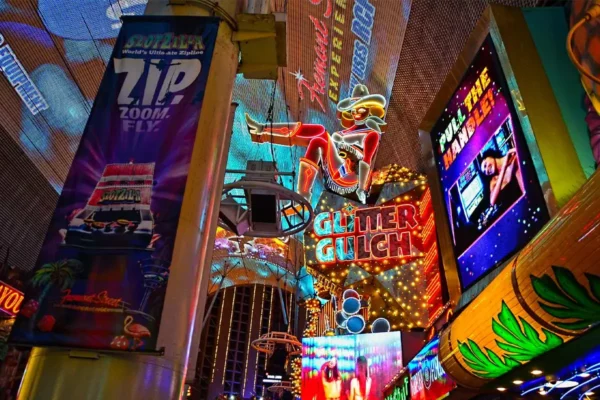The Metropolitan Pier and Exposition Authority (MPEA) released an Urban Land Institute (ULI) report on the future of Navy Pier which recommends a balance between public uses and commercial and cultural attractions, and reaffirms the popular attraction’s purpose and mission as “the people’s pier.”
The report will help guide upcoming decisions on restructuring Navy Pier governance and approving a strategic plan for renovating and re-developing the historic site, Illinois’ most popular visitor attraction.
Under terms of the MPEA reform legislation enacted earlier this year, MPEA Trustee Jim Reilly will recommend a new governance structure by December 31, 2010. Additionally, though not a part of the legislative mandate, Navy Pier will complete a new strategic plan by the end of January, 2011.
“Chicago is one of the world’s most beautiful and exciting cities, “the ULI report said. “It is a unique combination of community, culture and commerce in the heartland of America.
ULI sees Navy Pier as a place where the vitality of Chicago could be on display in a central locale offering culture, sports, dining, shopping, entertainment, music and the wonderful asset that is Lake Michigan. It is a place where locals and tourists alike can truly celebrate Chicago.
ULI said renovation and re-development strategies should capitalize on two competitive advantages unmatched in the Chicago market; Navy Pier’s spectacular views of the skyline and its status as the only place in the city from which most residents and visitors can go out on the water.
The MPEA Board will consider the full ULI report at its December meeting, at which it is expected to adopt a purpose and mission statement for Navy Pier.
The ULI report proposes language that could serve as the foundation for a statement providing a sense of direction to guide future decision-making.
“Navy Pier’s mission is to celebrate the vitality of Chicago by fostering a public place to serve the people of Chicago and present its cultural fabric to the world. The Pier will be an eclectic mix of retail, cultural, recreational, entertainment and other appropriate uses organized in a self-sustaining business framework.”
In addition to confirmation of the purpose and mission of Navy Pier, ULI recommends that MPEA consider two other immediate action steps.
• Creation of a new governance structure that is a champion for the Pier; “a voice speaking and advocating only for Navy Pier.” ULI says whether the new governing body is a separate, not-for-profit entity or an independent subsidiary of the MPEA, it should include leaders focused solely on the purpose and mission of Navy Pier.
• Development of a comprehensive long-term strategic plan to guide re-development of Navy Pier. That plan should define business objectives, a master plan for land use, investment priorities, development costs and potential sources of public and private funding. Also recommended is creation of a sustainable financial plan which MPEA has already begun to develop and will continue in the coming months.
ULI also recommends a detailed evaluation of capital projects it believes may be possible, even given the state of the economy and Reilly’s request that ULI focus recommended near-term investments that Navy Pier is fiscally capable of implementing.
With a goal of increasing attendance in the off-season and expanding the customer base, ULI suggested five priorities for capital dollars as they become available.
• Addressing deferred maintenance and updating the “old and dated” feel of Navy Pier, especially with an eye toward landscaping – “an important element in making the space the ‘People’s Pier,’ a place for relaxation, enjoyment and access to Lake Michigan.”
• Attracting a children’s “anchor”
• Construction of a larger, more iconic “Great Chicago Wheel”
• Supporting expansion of the Chicago Shakespeare Theatre
• Alternate uses of Festival Hall to promote more year-round activity.
Reilly commended ULI for recognizing that Navy Pier should accommodate both passive spaces free to public uses, along with commercial attractions, yet also maintain a balance between the two. He noted that while Navy Pier must feature plenty of free activities and public spaces, commercial activities also attract visitors and help defray costs of much of the entertainment and operation of the Pier.
“The Urban Land Institute has provided a great service not only to MPEA, but to the people of the entire Chicago area. This report offers a compelling vision and strategic framework for realizing the public purpose of Navy Pier as the people’s pier, while providing a sound and businesslike approach for moving forward,” said Reilly. “It’s now our job to evaluate in greater detail each of these recommendations and move forward with those we believe make the most sense in the near term.”
Reilly noted that while others have floated plans that were never realized for Navy Pier, the situation is different now, because ULI based its report on realistic assumptions about the availability of public and private capital. As part of the refinancing legislation, the MPEA now has a modest amount of capital to invest at Navy Pier and is already focusing its efforts on an actionable plan.
“It is also important to remember that Navy Pier is not broken,” said Reilly. “With eight million visitors a year, it is still one of the most successful developments of its kind anywhere. We are talking about refreshing and revitalizing the Pier, not about starting over.”
The report also points out what it sees as Navy Pier’s shortcomings, many of which could be addressed by ULI’s recommendations, and ultimately, by the MPEA’s long-term strategic plan. These include the seasonal quality of visits due to the lack of more year-round attractions, and an architectural style that, aside from the historically-significant “Head House” and Grand Ballroom, is described as “a hodgepodge of disparate concepts.”
“We hear the comments made by ULI and others about the character of the architecture at Navy Pier and other issues, and will be particularly mindful of these critiques as we move forward,” said Reilly.
ULI originally studied Navy Pier in 1989, the same year the general assembly created MPEA to manage and operate both the Pier and McCormick Place. Many of ULI’s recommendations were incorporated in the $250 million re-development that created the modern Navy Pier, which opened in 1995 as a mixed-use entertainment and meeting venue that quickly became, and remains, the leading attraction in Illinois.
ULI’s 2010 report is based on two Chicago visits of several days each in February and August by panels of land use experts. The panels reviewed previous planning efforts and interviewed more than 100 citizens, business leaders, community organizations, Navy Pier tenants and other stakeholders.
“We are confident that the new MPEA has the motivation, leadership and vision to make the right choices to ensure a strong, vibrant and inviting Navy Pier for its next 10 years and beyond,” said Daniel C. Van Epp, chairman of the ULI team that studied Navy Pier and a national leader in master-planned communities. “We’re encouraged that the MPEA plans to affirm the mission of Navy Pier, address its governance and has already begun work on a strategic plan.”





























